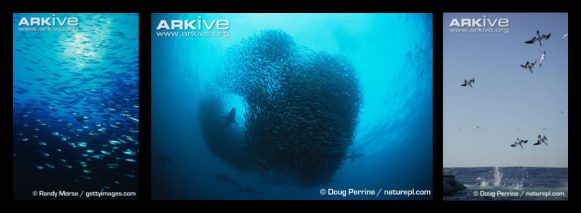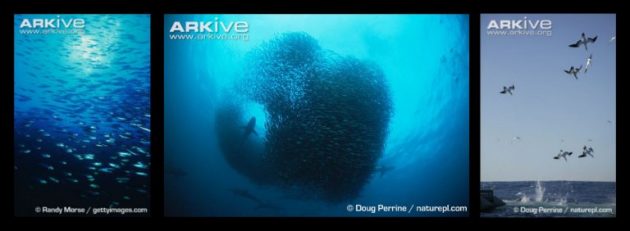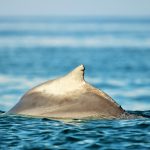Greatest shoal on Earth

The sardine run is a natural phenomenon deeply ingrained in the South African cultural heritage, and while it is well known to many of the general public, it is still poorly understood from an ecological perspective.
The sardine run is defined as the annual north-eastward migration of a small and variable fraction of the South African population of sardine Sardinops sagax from the eastern Agulhas Bank to the KwaZulu-Natal coast during early winter.
The migration is usually initiated late May to early June and the duration is highly variable, lasting until the end of June or even to September. The sheer number of these fish, christened as the greatest shoal on Earth, leads to a feeding frenzy along the coastline. Large numbers of seabirds (Cape gannets, African penguins, kelp gulls), marine mammals (Cape fur seals, common dolphins, bottlenose dolphins, and Bryde’s whales), sharks (copper, dusky, blacktip, spinner, and great white sharks), and gamefish (shad, Garrick, and geelbek) all gather to take advantage of this short-lived and abundant food source, and by doing so aid in the visual detection of the location of the shoal.
These coastal and marine species are not the only ones exploiting this migration, humans also avidly anticipate and exploit this mass migration, so important to the socio-economics of many areas.
Many communities benefit from the catch from beach-seine netting, anglers flock to the beach and rocks to participate in excellent game-fishing, local and international divers plan trips specifically to see the sardine run, and aerial and boat-based viewing is also offered by various companies. The question, however, is why do these fish leave nutrient-rich feeding grounds in the Cape for less productive subtropical waters.
There are a number of hypotheses for the sardine run, although it most likely corresponds to an early winter reproductive migration of a genetically distinct population, undertaken most, if not every, year.
The migration takes place close to the coast due to the thermal preferences of sardines (14-20°C), which is facilitated by a band of cooler coastal water. Based on the eggs of sardine eggs off the KwaZulu-Natal coast, the sardine remain there for some time before beginning the return migration which occurs unnoticed at depth as the fish avoid warmer surface water.
While some years the migration has not been recorded (potentially due to high water temperatures), it does not necessarily mean it did not occur, but perhaps happened further offshore and at greater depths.
Written by: Minke Witteveen
For further reading:
- Fréon, P., Coetzee, J.C., van der Lingen, C.D., Connell, A.D., O’Donoghue, S.H., Roberts, M.J., Demarcq, H., Attwood, C.G., Lamberth, S.J. and Hutchings, L. 2010. A review and tests of hypotheses about causes of the KwaZulu-Natal sardine run. African Journal of Marine Science 32: 449-479.
- KwaZulu-Natal Sharks Board. 2017. The greatest shoal on Earth. Accessed: 2017-05-06. URL: http://www.shark.co.za/Pages/Sardinerun



